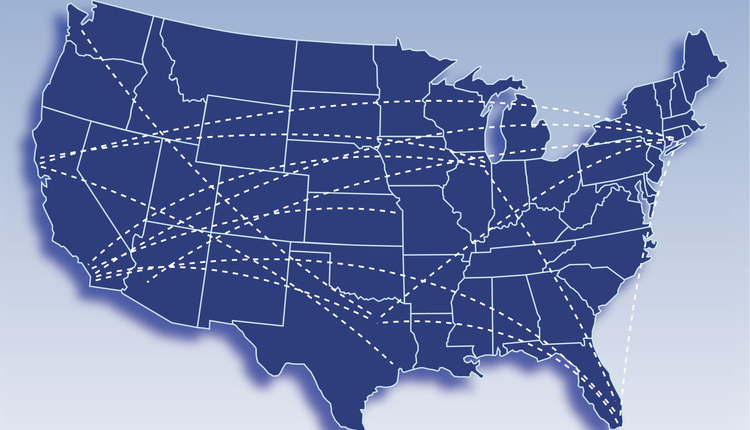The Postal Service has received additional questions on the flats deflection standards that went into effect Oct. 3. Here are the questions and answers:
Have the changes been widely communicated? For several years, USPS has communicated broadly to the mailing community about the revised deflection standards, which went into effect June 7, 2010. We deferred the assessment of additional postage for non-compliant flats until Oct. 3, 2010, to provide mailers the opportunity to make changes to slightly stiffen or redesign their non-compliant flats to meet the new standards. Local offices also have made contact with individual mailers during the past few months to discuss noncompliant pieces.
How will you perform verifications and determine assessments? Mail acceptance personnel have been instructed to perform a deflection verification on each First-Class, Periodicals, Standard Mail or Bound Printed Matter mailing when presented for acceptance according to the procedures outlined in DMM 301. For mailpieces presented after Oct. 3 that do not meet the deflection standards, local Business Mail Entry personnel are allowed to accept that first mailing at the presented price without applying the additional postage assessment. At that time, the mailer and mail owner will be provided with written notification that all future flats mailings must meet flats deflection standards, and that those that do not will be subject to the applicable higher price assessment outlined in DMM 301, Exhibit 1.7b.
Will all flats be tested? Flats mailings that are prepared entirely as ECRWSH (Enhanced Carrier Route Walk Sequence High-Density) and ECRWSS (Enhanced Carrier Route Walk Sequence Saturation) do not require testing. Also, flats that are prepared at basic carrier route prices (ECRLOT, Enhanced Carrier Route Line of Travel) and that are drop-shipped to DDUs are not subject to Flat Deflection testing.
How will you verify Co-bundled mail? In regards to Combined or Co-bundled mailings, we have instructed our Business Mail Entry Units and acceptance employees to "choose a sample from all of the different mailpieces in the mailing." This difference would include but would not be restricted to types, sizes, and versions. For combined or co-bundled mailings, our flats deflection verification procedures allow an assessment to be limited to only those pieces that failed when the mailer is able to document the number of pieces for that portion of the mailing. This may also apply to versions of a piece, provided the mailer can document the number of pieces for the version that fails. The documentation should be in the form of a Version Summary Report like those typically found in Mail.dat or Mail.XML files. In any case the mailer retains the option to rework the mailing.
Have the changes been widely communicated? For several years, USPS has communicated broadly to the mailing community about the revised deflection standards, which went into effect June 7, 2010. We deferred the assessment of additional postage for non-compliant flats until Oct. 3, 2010, to provide mailers the opportunity to make changes to slightly stiffen or redesign their non-compliant flats to meet the new standards. Local offices also have made contact with individual mailers during the past few months to discuss noncompliant pieces.
How will you perform verifications and determine assessments? Mail acceptance personnel have been instructed to perform a deflection verification on each First-Class, Periodicals, Standard Mail or Bound Printed Matter mailing when presented for acceptance according to the procedures outlined in DMM 301. For mailpieces presented after Oct. 3 that do not meet the deflection standards, local Business Mail Entry personnel are allowed to accept that first mailing at the presented price without applying the additional postage assessment. At that time, the mailer and mail owner will be provided with written notification that all future flats mailings must meet flats deflection standards, and that those that do not will be subject to the applicable higher price assessment outlined in DMM 301, Exhibit 1.7b.
Will all flats be tested? Flats mailings that are prepared entirely as ECRWSH (Enhanced Carrier Route Walk Sequence High-Density) and ECRWSS (Enhanced Carrier Route Walk Sequence Saturation) do not require testing. Also, flats that are prepared at basic carrier route prices (ECRLOT, Enhanced Carrier Route Line of Travel) and that are drop-shipped to DDUs are not subject to Flat Deflection testing.
How will you verify Co-bundled mail? In regards to Combined or Co-bundled mailings, we have instructed our Business Mail Entry Units and acceptance employees to "choose a sample from all of the different mailpieces in the mailing." This difference would include but would not be restricted to types, sizes, and versions. For combined or co-bundled mailings, our flats deflection verification procedures allow an assessment to be limited to only those pieces that failed when the mailer is able to document the number of pieces for that portion of the mailing. This may also apply to versions of a piece, provided the mailer can document the number of pieces for the version that fails. The documentation should be in the form of a Version Summary Report like those typically found in Mail.dat or Mail.XML files. In any case the mailer retains the option to rework the mailing.
